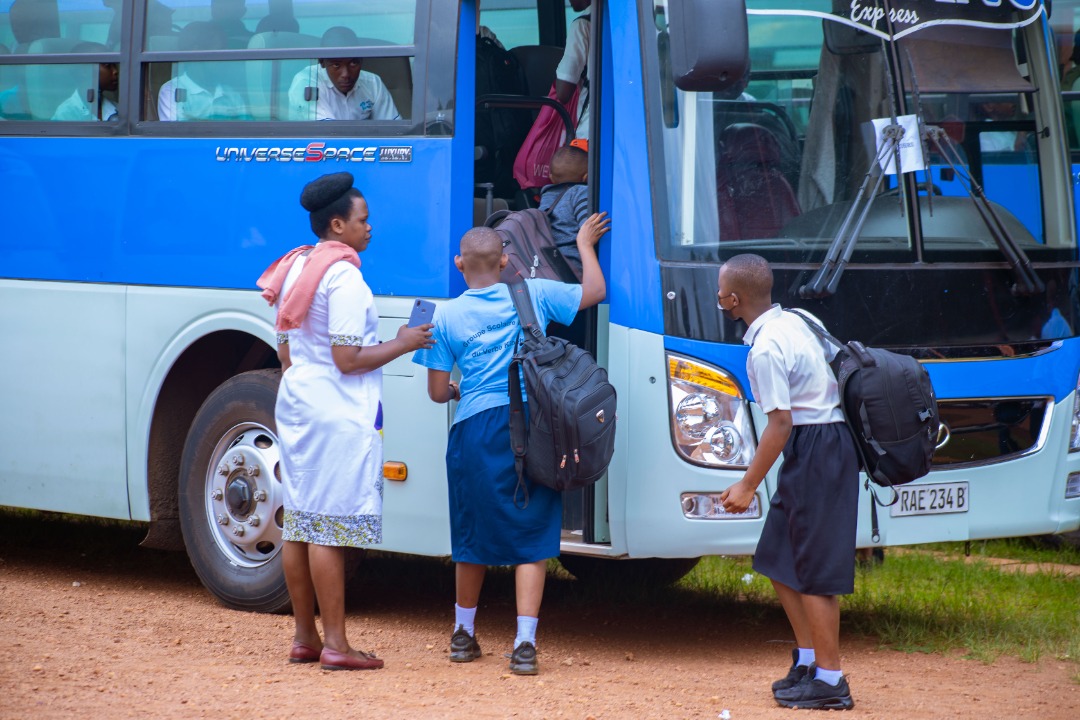
Parents help children board a bus back to school for second term. File Photo.
In Rwanda, having quality education, and a competent labour force is a priority. The World Bank, which has been among Rwanda’s close partners to improve quality of learning, says the country has indicated “political commitment and funds spent appropriately.”
“There is political commitment. This is, I think, an area where Rwanda is very strong and an Inspiration to the world. There is commitment in improving human development. It comes all the way from the top offices down to the level of schools,” Huma Kidwai, a Senior Education Specialist and Task Team Leader of Quality Basic Project at World Bank said.
“I think, the structure and the organizations of the systems really allows that commitment, performance, contracts and compliance structure. This is a huge strength, and the country continues to capitalize them. However, improving the quality of teaching has been identified as an area of work,” Kidwai said.
He pointed out that the World Bank and the government are working together in training teachers to deliver more practical lessons, but also improving the model of teaching in general.
The World Bank has been financing Rwanda’s education sector for several years and various fields that target enhancing teacher effectiveness for improved student learning, reducing overcrowding and distance to schools, and strengthening institutional capacity to support teaching and learning.
For example, from 2018 to 2024 Rwanda-World Bank ongoing projects include Improving Quality Basic Education Project, and was funded at a tune of $340 million, Priority Skills for Growth Project funded at $270 million, and Africa Centers of Excellence for Higher Education project worth $20 million.
Other ongoing projects are improving Human Capital Development, a Find worth $475 million, and improving the Inclusive Education Initiative project worth $1.9 million.
The observation was made during the launch of a three-day foundational learning symposium, organized by the Ministry of Education in Partnership with the World Bank.
“Education is about more than just accessing the schooling system. We, as the Ministry of Education, are guided by the mission to “transform the Rwandan citizen into skilled human capital for the socio-economic development of the country.” To achieve this, we need to ensure the foundations are solid,” Gaspard Twagirayezu, Minister of State for Primary and Secondary Education said.
“This means ensuring all our children achieve the benchmarks for numeracy and literacy at early grade levels. Research has shown that we must get the fundamentals right to avoid learning outcome challenges and, ultimately, sizable future income losses along the education chain,” Twagirayezu added.
He stated that Investment in the first few years of a student’s education yields greater system efficiency, as measured by reductions in repetition, dropout, and consistent increases in learning gains.
Last year, the government intensified efforts on improving the education system with mass construction of classrooms across the country, and increasing teachers’ salaries, a decision that was hugely welcomed by the public.
A total of 22,500 new classrooms are now being used, recruited over 29000 new teachers last year only, increased primary teacher’s salaries by 88% and teachers with A0 and A1 degrees saw salaries increased by 40%.
According to Twagirayezu, the government has achieved progress in its education sector, with drastic universal access to education at the primary level, with net-enrollment rates now at 98.9%.
“We have also drastically increased transition rates to secondary education. We have put in place various efforts to address drop-out and repetition to ensure children complete 12 years of primary education,” he added.
Government targets to reduce dropout in primary, lower secondary and upper secondary from 5.6%, 6.3% and 3% in 2017 to 1.2%, 1.7% and 1% respectively by 2024.

